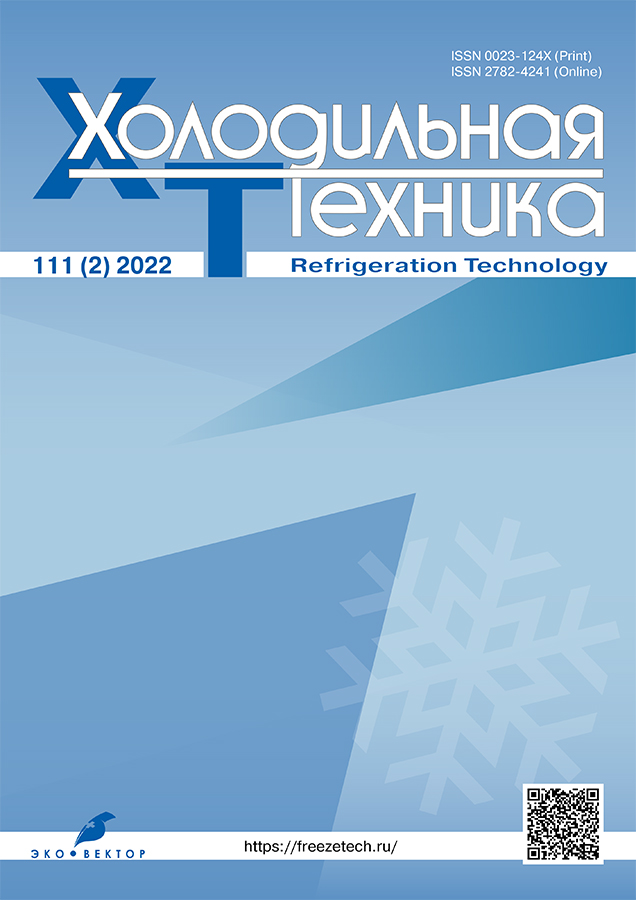Thin-Film Steam Generators of Binary Geothermal Power Plants
- Authors: Gogonin I.I.1
-
Affiliations:
- Kutateladze Institute of Thermophysics of SB RAS
- Issue: Vol 111, No 2 (2022)
- Pages: 97-104
- Section: Original Study Articles
- URL: https://freezetech.ru/0023-124X/article/view/107957
- DOI: https://doi.org/10.17816/RF107957
- ID: 107957
Cite item
Abstract
BACKGROUND: The cost of electricity generated by a geothermal power plant is twice as low as that of energy sources. However, at present, geothermal power plants mainly use submersible-type apparatus, and the most promising thin-film steam generators have not been sufficiently investigated.
AIM: The purpose of this work is to show the advantages of a thin–film steam generator in comparison with an immersion type heat exchanger.
MATERIALS AND METHODS: The basis for this publication is the experimental research of the author and the analysis of data cited in the literature on heat exchange during the boiling of a film irrigating a bundle of finned pipes.
CONCLUSIONS: The use of thin-film steam generators will significantly reduce the amount of expensive refrigerant in a geothermal power plant circuit. With a cocurrent flow of steam and liquid, the ingress of large drops onto the surface of a superheater tubes is excluded. The use of finned tubes in a bundle with optimal finning parameters ensures a uniform irrigation. The artificial centers of vaporization of the finned tube repeatedly intensify the heat transfer during film boiling, which ultimately leads to a reduction in the weight and dimensions of the superheater.
Full Text
About the authors
Ivan I. Gogonin
Kutateladze Institute of Thermophysics of SB RAS
Author for correspondence.
Email: gogonin@itp.nsc.ru
ORCID iD: 0000-0001-8914-5860
Dr. Sci. (Tech), Prof., Principal Researcher
Russian Federation, NovosibirskReferences
- Butuzov VA, Tomarov GV. Geothermal energy of Kamchatka. Teploenergetika. 2020;11:50–63. doi: 10.1134/S0040363620110041 (in Russ).
- Moskvicheva VN, Petin YuM. Results of experimental work at the Paratunskaya freon power plant. In: The Use of Freons in Power Plants. Novosibirsk: IT SO AN SSSR; 1973. P:3–12. (In Russ).
- Kutepov AM, Sterman LS, Styushin NG. Hydrodynamics and Heat Transfer during Vaporization. Moscow: Vysshaya shkola; 1986. (in Russ).
- Kutateladze SS, Sorokin YuL. On the hydrodynamic stability of some gas-liquid systems. In: Problems of heat transfer and hydraulics of two-phase media. Moscow, Leningrad: GEI; 1961. P. 315–344. (In Russ).
- Maltsev LI, Balakleevsky YuI. Flat liquid jets. Teplofizika i aeromekhannika. 2000;3:217–224. (In Russ).
- Roques J-F, Thomee JR. Falling Films on Arrays of Horizontal Tubes with R134a, Part I: Boiling Heat Transfer Results for Four Types of Tubes. Heat Transfer Engin. 2007;28(5):398–414. doi: 10.1080/01457630601163736
- Fujita J, Tsatsui M. Experimental and analytical study of evaporation heat transfor in falling films on horizontal tubes. In: Proc. of 10th Int. Heat Transter Conf. Vol. 6. Brighton UK. 1994. P:175–180. doi: 10.1615/IHTC10.5470
- Gogonin II, Kabov OA. Influence of liquid capillary retention on heat transfer during condensation on finned tubes. Izvestiya SO AN SSSR, ser. tekh. nauk. 1983;2(8)3-8. (In Russ).
- Bressler RJ, Wyatt PW. Surface wetting through Capillary Grooves. ASME J. Heat and Mass and Transfer. 1970;92(1):126–132. doi: 10.1115/1.3449605
- Akesjö A, Gourdon M, Vamling L, et al. Experimental and numerical study of heat transfer in a large-scale vertical falling film pilot unit. Int. J. Heat and Mass Transfer. 2018;125:53–65. doi: 10.1016/j.ijheatmasstransfer.2018.04.052
- Isachenko VP, Osipova VA, Sukomel AS. Heat Transfer. Moscow: Energoizdat; 1980. (In Russ).
- Gogonin II. Heat Transfer at Nucleate Boiling. Novosibirsk: Nauka SB RAS; 2018. (In Russ).
- Wen T, Lu Li, He W, Min Y Fundamentals and applications of CFD technology on analyzing falling film heat and mass exchangers: A comprehensive review. Appl. Energy. 2020;211:114473. doi: 10.1016/j.apenergy.2019.114473
- Gogonin II. Experimental Studies of the influence of hydrodynamics on heat transter at evaporation and boiling of film irrigating a bundle of horizontal finned tubes. J. Phys.: Conf. Ser. 2020;1565(1):012049. doi: 10.1088/1742-6596/1565/1/012049
- Kuznetsov DV, Pavlenko AN, Chernyavskiy AN, Radyuk AA. Study of the effect of three-dimensional capillary-porous coatings with various microstructural parameters on heat transfer and critical heat flux at pool boiling of nitrogen. J. Phys.: Conf. Ser. 2020;1677:012089. doi: 10.1088/1742-6596/1677/1/012089
- Kuznetsov DV, Pavlenko AN, Radyuk AA, et al. Features of heat transfer during pool boiling of nitrogen on surfaces with capillary-porous coatings of various thicknesses. J. Engin. Thermophysics. 2020;29(3):375–387. doi: 10.1134/S1810232820030017
- Kuznetsov DV, Pavlenko AN, Volodin OA. Effect of structuring by deformational cutting on heat transfer and dynamics of transient cooling processes with liquid film flowing onto a copper plate. J. Engin. Thermophysics. 2020;29(4):531–541. doi: 10.1134/S1810232820040013
- Moiseev MI, Fedoseev A, Shugaev MV, Surtaev AS. Hybrid thermal lattice boltzmann model for boiling heat transfer on surfaces with different wettability. Interfacial Phenomena and Heat Transfer. 2020;8(1):81–91. doi: 10.1615/InterfacPhenomHeatTransfer.2020033929
- Gogonin II. The effect of artificial vaporization centers on heat exchange during boiling of the film irrigating a bundle of horizontal finned pipes. Thermophys. Aeromech. 2021;28(5):697–702. doi: 10.1134/S0869864321050103
Supplementary files














